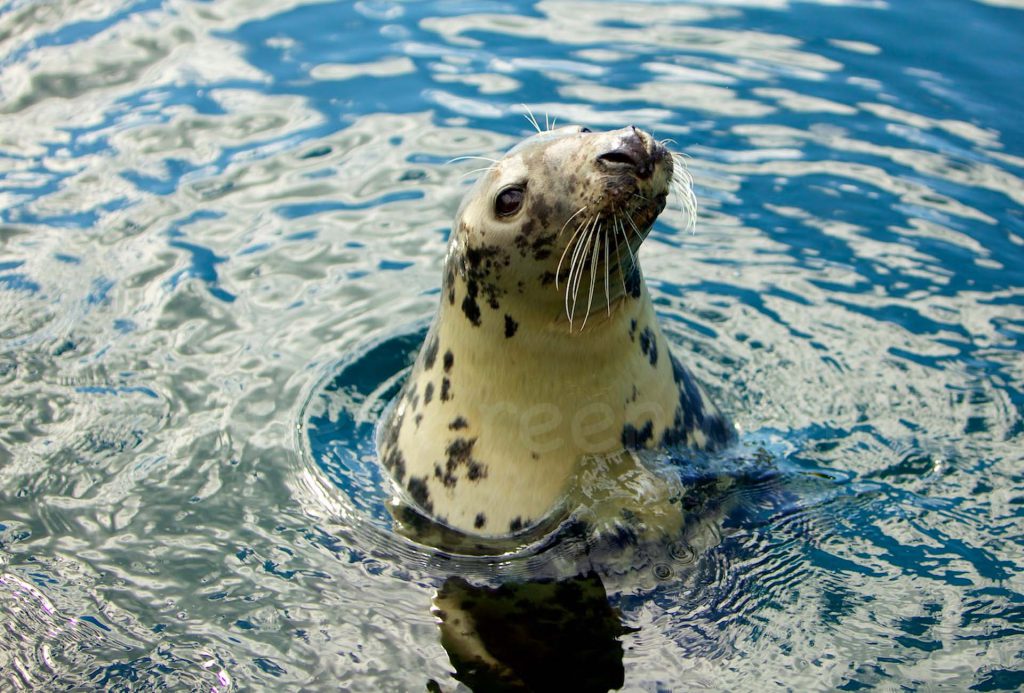Discovering amazing landscapes
The west coast of Harris Island is one of landscapes and scenery that are similar to the typical image of Scotland that any visitor has in mind before leaving, i.e. amazing and contrasting landscapes where sea meets land along an uninterrupted succession of bays, lochs, isthmuses and capes.
Transient lights that set the landscape ablaze
The foothills of the mountains weathered by ancient glaciers harbour countless lochs and rivers that sometimes wind among the rocks, sometimes in the peat land covered with purple-hued heather. The landscapes are unique and each bend brings new scenery bathed in lights that constantly change with weather conditions. These transient and unique lights make the destination so charming and are an obsession for photographers, looking in vain for their source among the thick cloud layer that float in the sky.
It is one of the rare places in Scotland where one can gauge the strength and power of the landscapes at low altitude as the highest point in the south of Harris Island, the Roineabhal, only reaches 460 m high. However, closeness to the sea adds extra charm to this unique and almost strange atmosphere.
The unique geological formation of Lewis and Harris Islands
While travelling the east coast, along the road that stretches over the flows of grey gneiss, one better understands how the landscapes of the Hebrides Islands have formed.
The Hebrides Islands have formed three billion years ago, when the lava solidified after it flowed from deep inside the earth. Subsequently, a billion years ago, thrusts caused by crustal movements have moved the rocks and led to the creation of mountains.
Contrasting landscapes altered by geological evolution
From then on, time has wrought its changes with the help of the wind and continues to shape the landscapes. During glacial periods, the rocks were polished, several dips were formed and the breaking up rocks resulted in the formation of boulders. After the end of the ice age, climatic warming has led to the formation of rivers which further carved the landscape. The vegetation developed, just like trees and shrubs that later disappeared towards 4000 BC during a new climate change which caused torrential rain followed by a rise in water levels. The vegetation then decayed, giving way to the famous peat that is characteristic of the current landscape of Scotland.
On the West Coast, the landscapes are very different. The dunes and white sandy beaches comprise rich hues of emerald blue that are more likely to be seen in the tropics than in these latitudes.
The cultural heritage of Saint Clement’s Church
While visiting the island, be sure not to miss a visit to Saint Clement’s Church. It is still not clear why the Christians decided in the first century AD to dedicate this religious building to the patron saint of seafarers as Saint Clement is mentioned nowhere else in this part of Scotland. Some believe that the Danish people, who were present on Harris Island in the 11th century, could be behind this choice.
The supremacy of the MacLeods
The church was built in 1520 by the MacLeods, an old Scottish clan whose first chief was Leod, the son of Olaf the Black, a Norwegian. The eldest son of Leod inherited land in Dunvegan and Harris Island and changed his name to Macleod of Dunvegan. The family line continued and a 30th generation currently heads the clan.
The Saint Clement’s Church houses the graves of the eighth and ninth Macleod Chiefs of Dunvegan.
Close to the church is the Rodel Hotel, an old house built in 1871, where lived Alexander Macleod of Dunvegan and Harris. This charming place is worth the visit. The very old small port situated in front of the establishment was built with old rubble stones, contributing to the timeless character of the place.
Discovering the marine wildlife of Harris Island
The eastern coast of Harris Island is situated downwind of the island, which explains the presence of deep and craggy bays, which represent so many sheltered habitats for a diverse and varied wildlife.
A growing population of seals
Don’t miss the chance of watching the colonies of seals living in the bays.
Their protection has been so successful that the population is developing more and more. Low tides are more favourable for observation in order to watch them lazing around on the uncovered rocks in the middle of the bay. One can see tens of common seals waiting for the tide to turn in order to go fishing again.
A rich marine biodiversity
It is also not uncommon to spot otters and various birds such as cormorants, grey herons and puffins. The Royal Society for the Protection of Birds (RSPB) was indeed alarmed by the ‘dramatic decline’ in the populations of nesting birds, particularly puffins. It should be noted that Scotland, and largely the Hebrides Islands, has become home to 45% of the sea birds that usually reproduce naturally on the territory of the European Union.




